
‘Another buckle was encrusted with carnelian, jade, coral and turquoise.’ Picture here and below: Marina Kilunovskaya
Eyecatching belt buckles worn by Xiongnu female invaders is found buried on the banks of the Yenesei River in modern-day Tuva Republic.
Women buried in a unique ancient necropolis went to the afterlife wearing intriguingly decorated belt buckles made of coal, new archeological finds have shown.
They were also adorned with flame-shaped bronze decorations on their shoulders.
In addition, they wore magnificent bronze buckles on their belts, while Xiongnu men wore buckles mainly of iron.
The buckles are artistically decorated depicting fantastical animals such as dragons as well as leopards, panthers, horses, yaks and snakes.
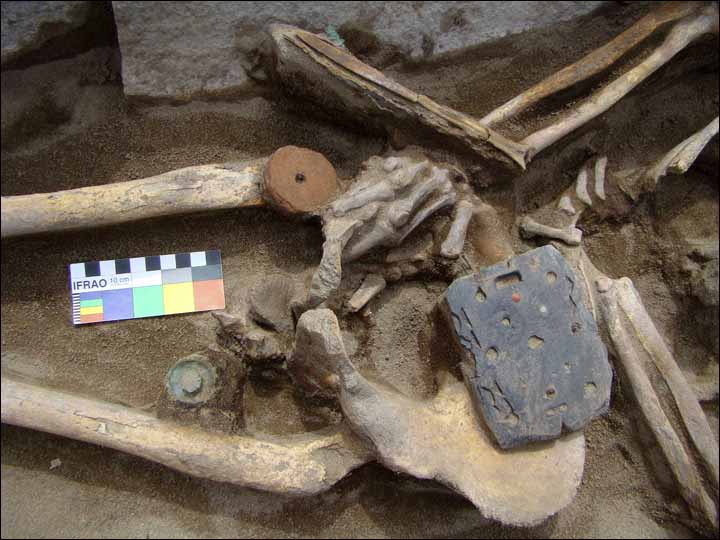
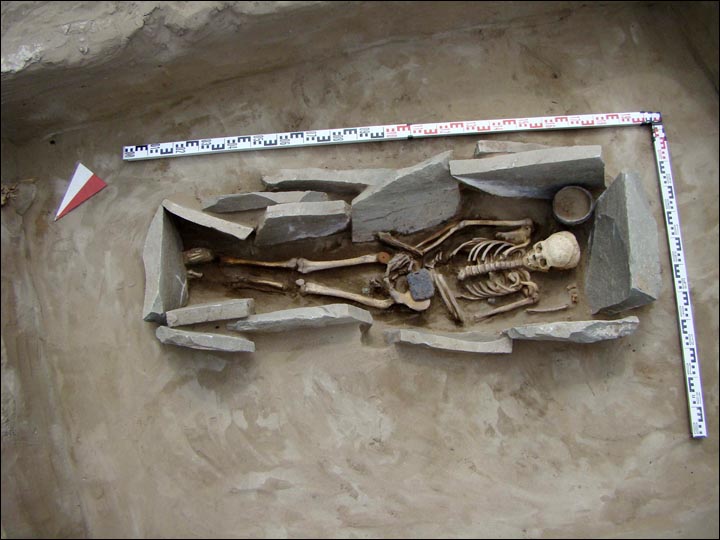
The women-only buckles made from coal are large – up to 20 cm in diameter.
‘The most interesting and richest finds are in the women’s graves’, said Dr Marina Kilunovskaya, who led the expedition to the Ala-Tei burial ground on the Yenisei River in the Republic of Tuva.
The women-only buckles made from coal are large – up to 20 cm in diameter, decorated with carved animal images or beautifully encrusted with semiprecious coral, carnelian, turquoise, and jade.
‘On one of the buckles you can see engravings,’ said the scientist.
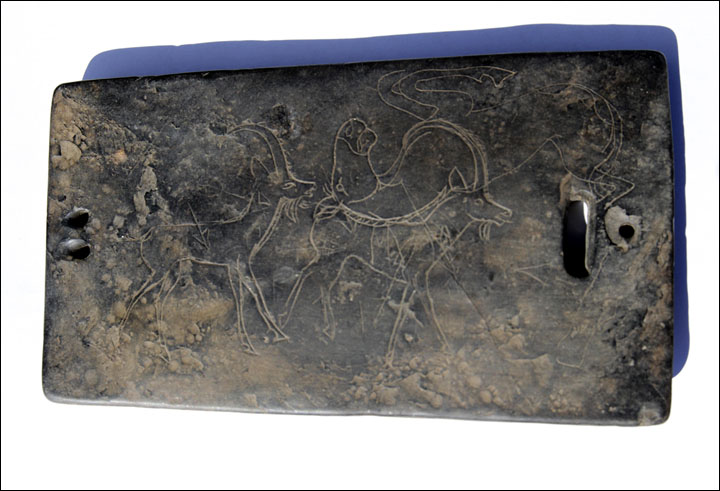
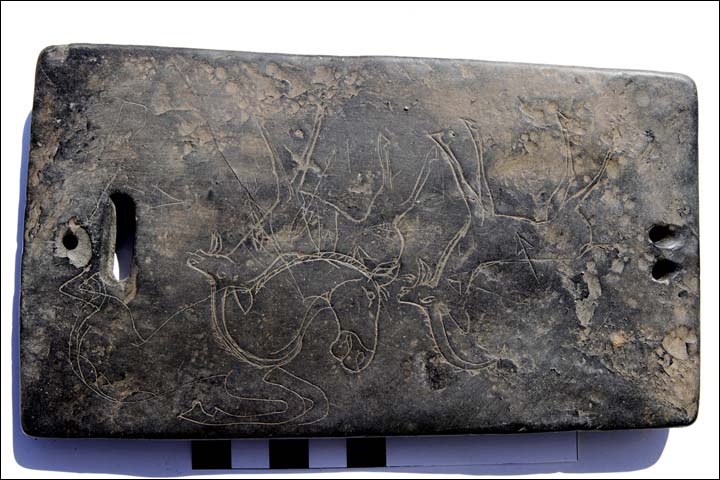
On one of the coa buckles can be seen Scythian-style engravings.
On one side are two goats and arrows that pierce them. On the other, a horse is depicted in Scythian style.
‘Another was encrusted with carnelian, jade, coral and turquoise.’
She said: ‘Evidently, their owners were very rich people who came from Trans-Baikal region or Mongolia. They found this material, it was interesting for them, and they used it for their decorations.’
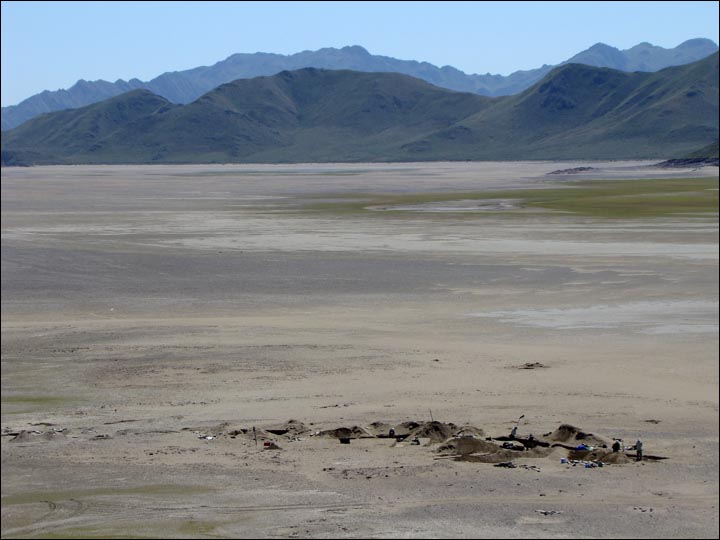
Ala-Tei burial ground located on the Yenisei River in the Republic of Tuva.
‘Most of the remains here belong to women.
‘My colleagues often describe Xiongnu as big warriors, invaders.
‘But these invaders, as you can see, are women in fact’ – and they came northwards from the borders of modern-day China.
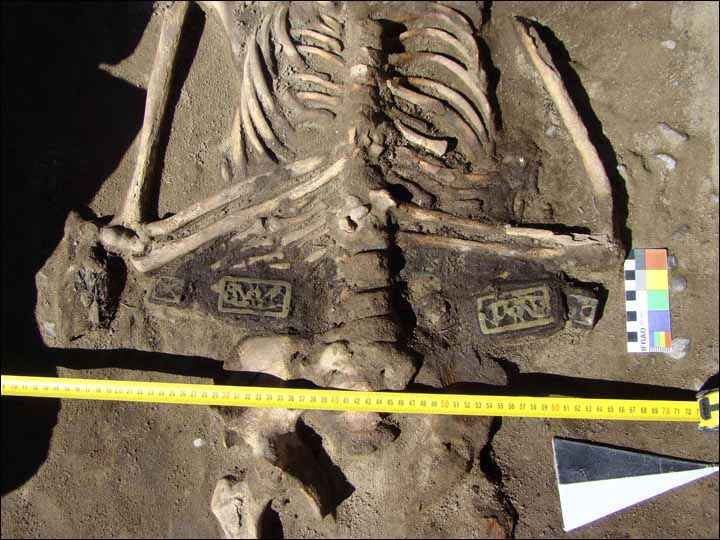
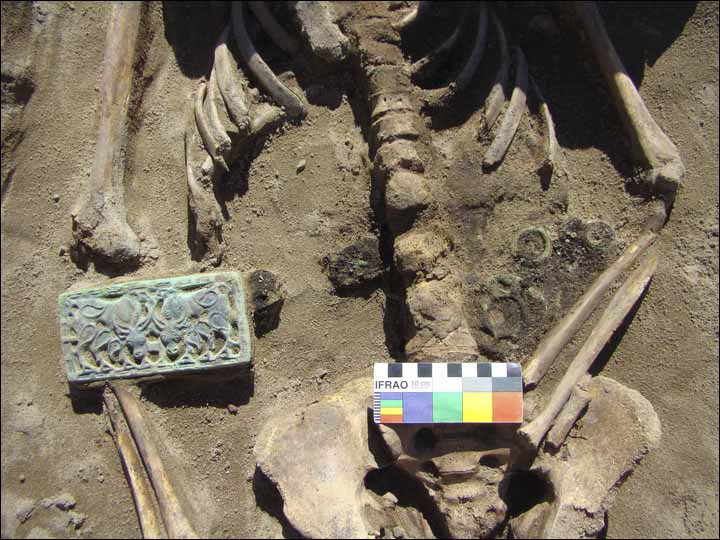
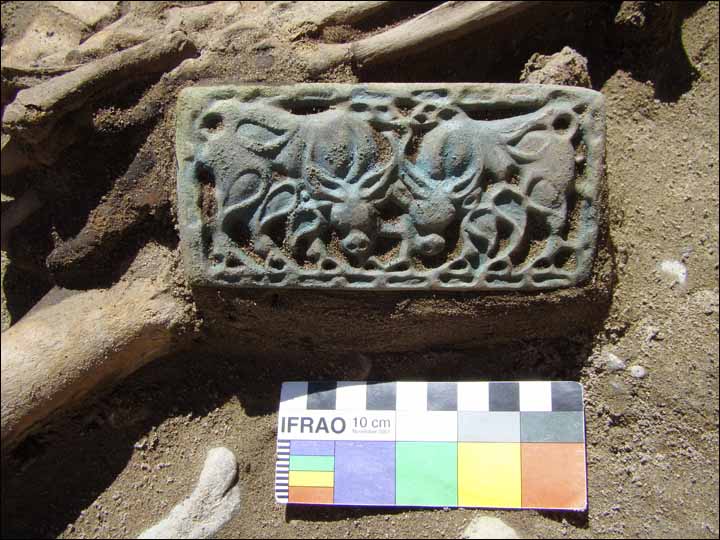
‘First of all, in the central element of the belts are large bronze buckles with the image of animals – bulls, camels, horses, and snakes.’
The coal belt decorations worn by the women warriors ‘were not for everyday use, of course, but for some special occasions, like weddings or funerals’, she believes.
There are only ten such coal buckle decorations in the world ‘and here we have four’, with all being native to Siberia, said Dr Kilunovskaya, of the Institute for the History of Material Culture, Russian Academy of Sciences, in St. Petersburg.
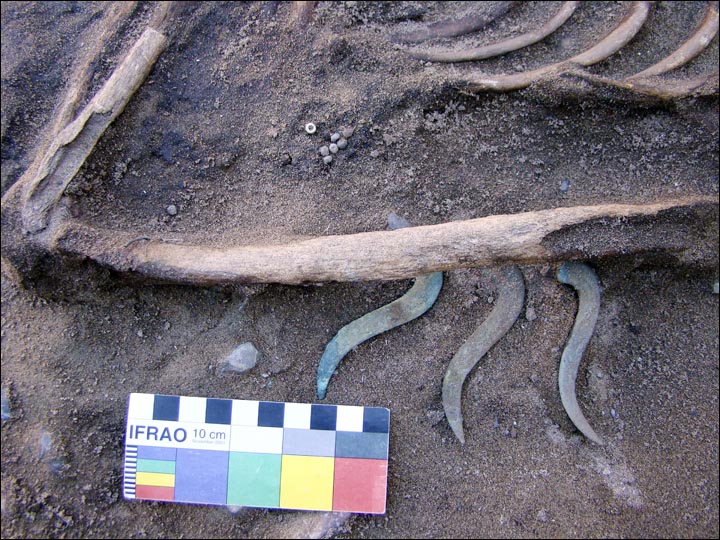
They were also adorned with flame-shaped bronze decorations on their shoulders.
‘I started excavations in 2015, and there are 80 burials here with no mounds,’ she told The Siberian Times.
‘Most of the ancient people are buried in rectangular stone boxes, sometimes boat-shaped, or in wooden coffins or frames, with a stone covering.
‘Some burials are without any construction inside.
‘Many include the heads of horses.
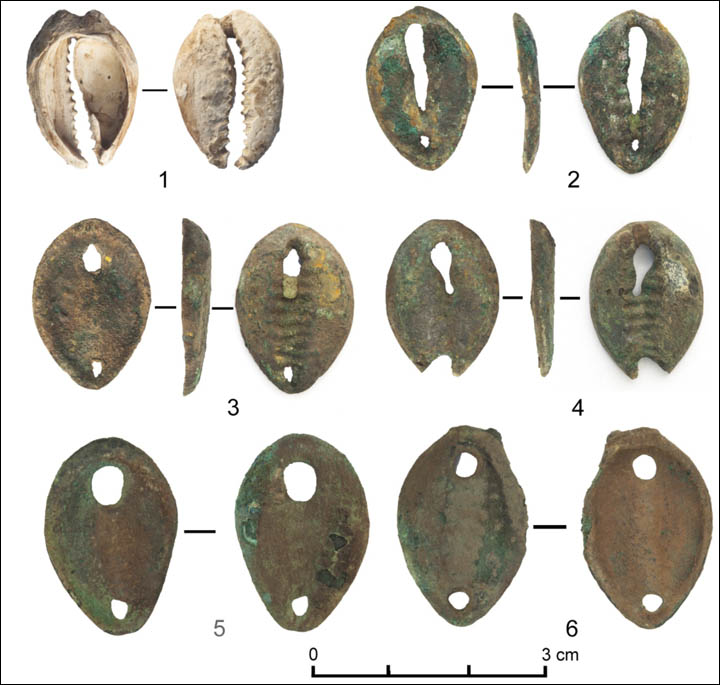
Bronze imitations of cowrie shells.
‘Obviously, there was horse skin, too, which has not preserved – so only the skull and hooves survive.’
‘First of all, in the central element of the belts are large bronze buckles with the image of animals – bulls, camels, horses, and snakes.
‘Other details of the female belt, in most cases, are also made of bronze – these are rectangular hexagonal plaques, bronze imitations of cowrie shells, simple and openwork rings, and Chinese Wu Shu coins.
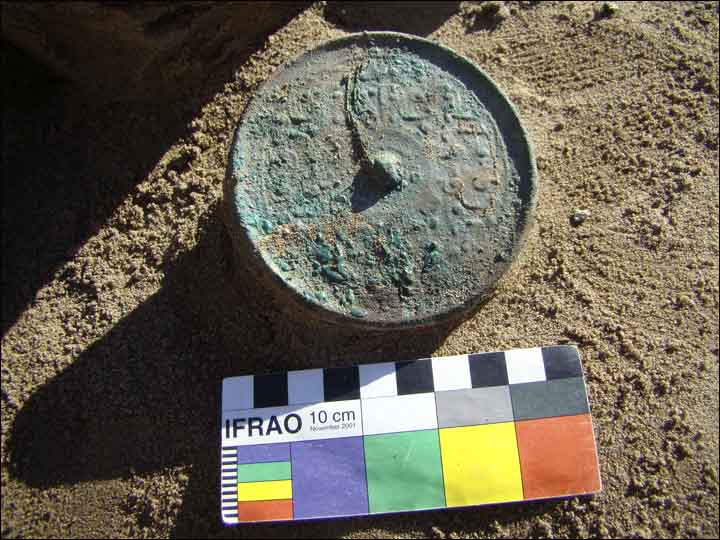
‘Most of them are the early mirrors of the Western Han Dynasty (II-I centuries BC).’
‘We found whole bronze mirrors or their fragments.
‘Most of them are the early mirrors of the Western Han Dynasty (II-I centuries BC), but there were fragments of two earlier Chinese mirrors belonging to an earlier period.’
On male remains there were ‘iron buckles on the belts’.
Finds included buckles for shoes, knives, iron rings and hooks.
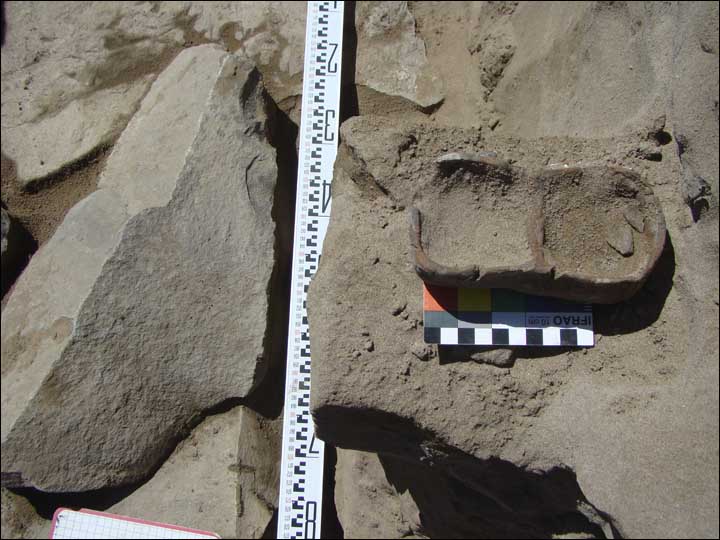
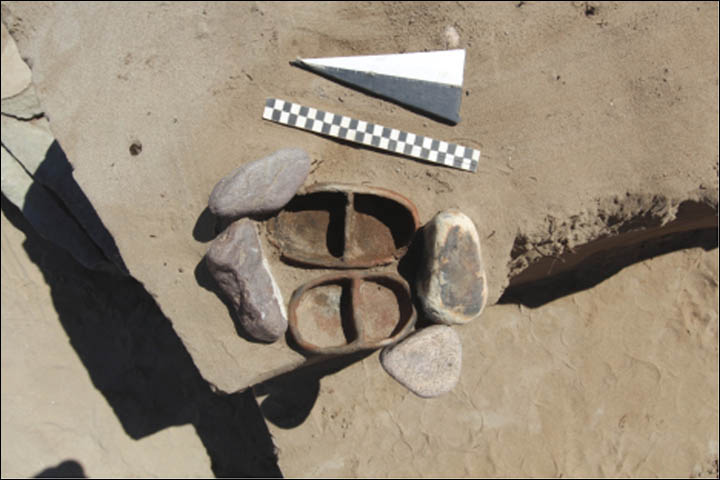
‘These were located right above the graves. I believe these were kind on lamps.’
‘Another interesting find in the graves were strange small flat vessels separated in the middle by a septum with an opening in the centre,’ she said.
‘These were located right above the graves. I believe these were kind on lamps.’
Dr Kilunovskaya admitted: ‘Actually… I’m afraid to give this interview, because when the general public learns about such an archaeological site… we may find ‘black diggers’ coming.
‘The only hope is that it is hard to reach this place.
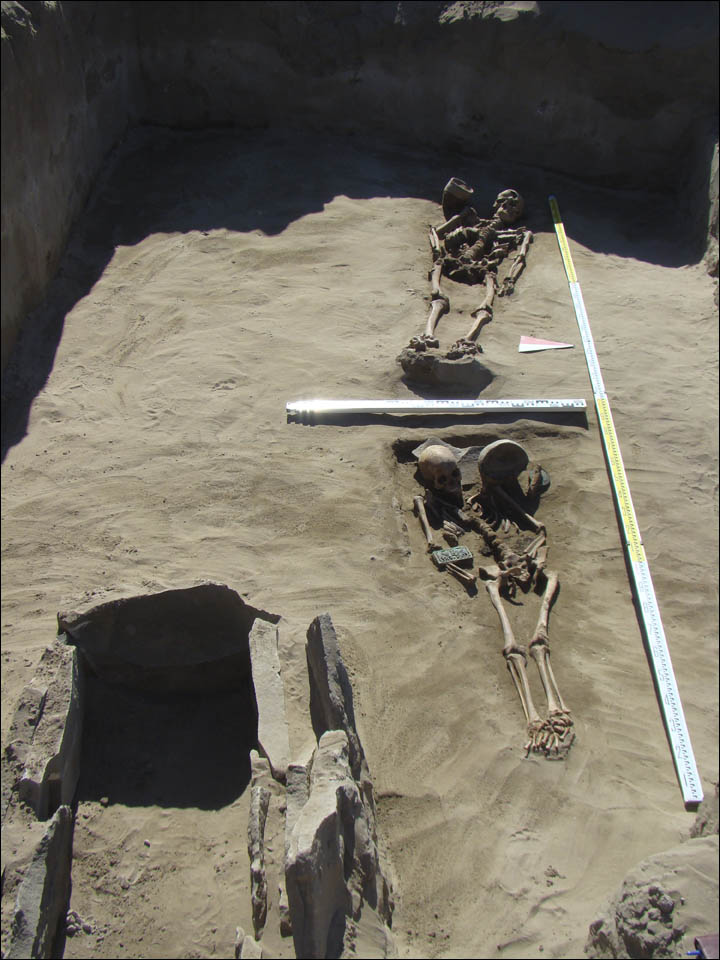
Glacier bumblebee lived through the Ice Age on this barren Arctic island. Picture: Federal Center for Integrated Arctic Research
‘There are quite a lot of burial grounds in this area – dated from Scythian times to the Middle Ages (2nd century BC to the 12-13th centuries) and they are being destroyed by water.
‘When we came here for the first time, we saw a lot of skulls under a steep river bank and green bones there.
‘Green because there was bronze items in burials. This looked terrible… So we try to save what we can.’
Due to climate conditions, work here can only go ahead during the summer months and more research will be undertaken next year.
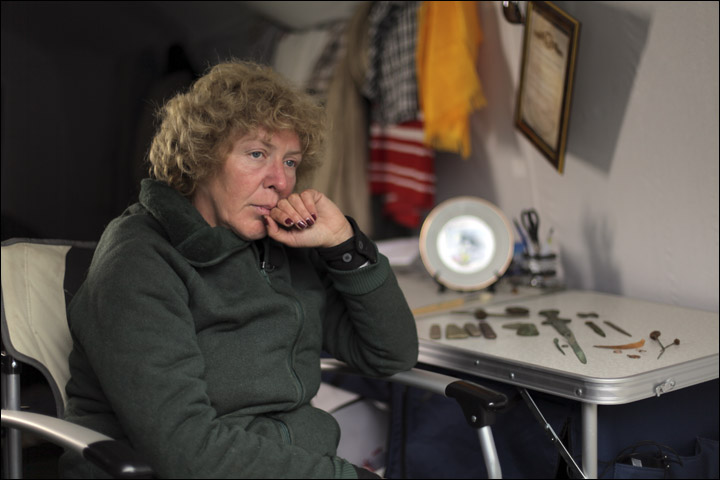
Glacier bumblebee lived through the Ice Age on this barren Arctic island. Picture: Federal Center for Integrated Arctic Research
She describes the finds as ‘the richest belt decorations’.
‘The belt is the main attribute of the nomads, so it was richly decorated with various plaques – mostly of bronze, but also coal.’
The Xiongnu were confederation of nomadic peoples who, say ancient Chinese sources, inhabited the eastern Asian Steppe from the 3rd century BC to the late 1st century AD.


